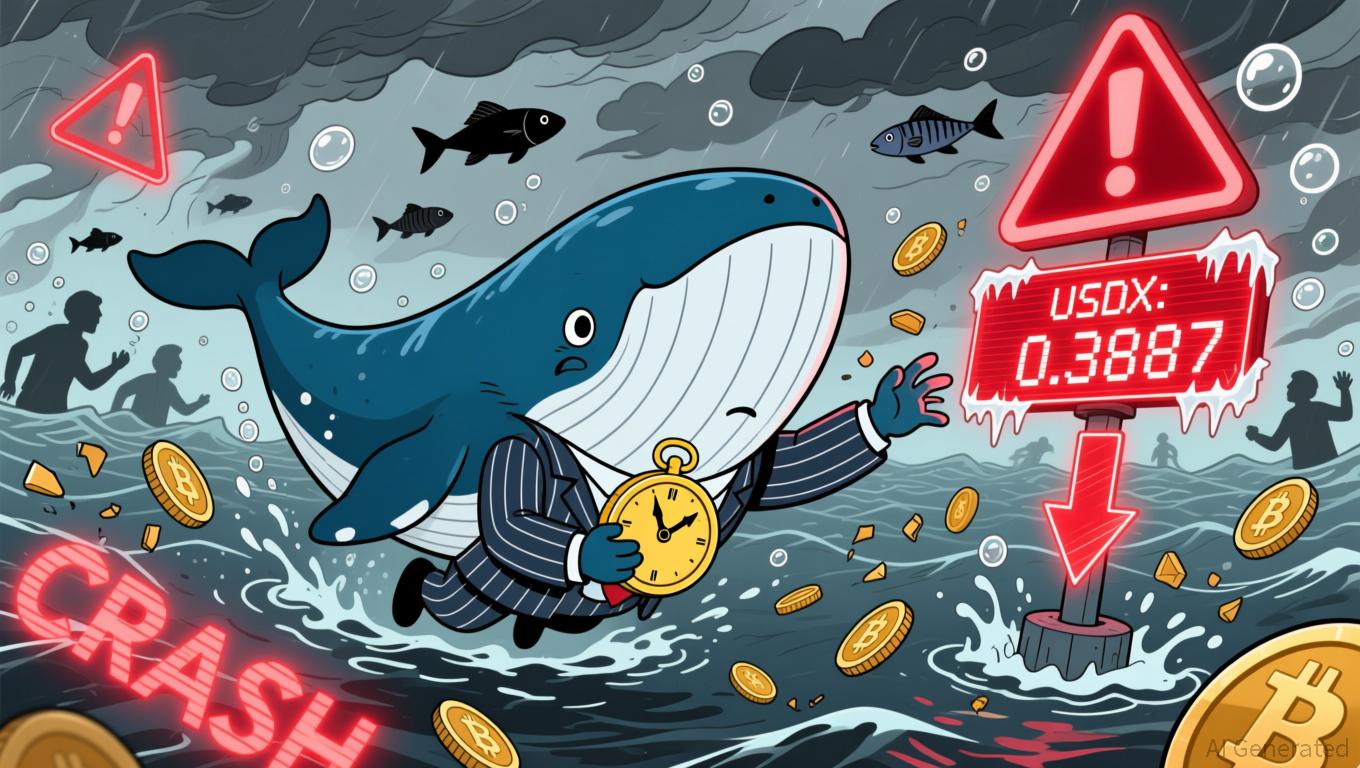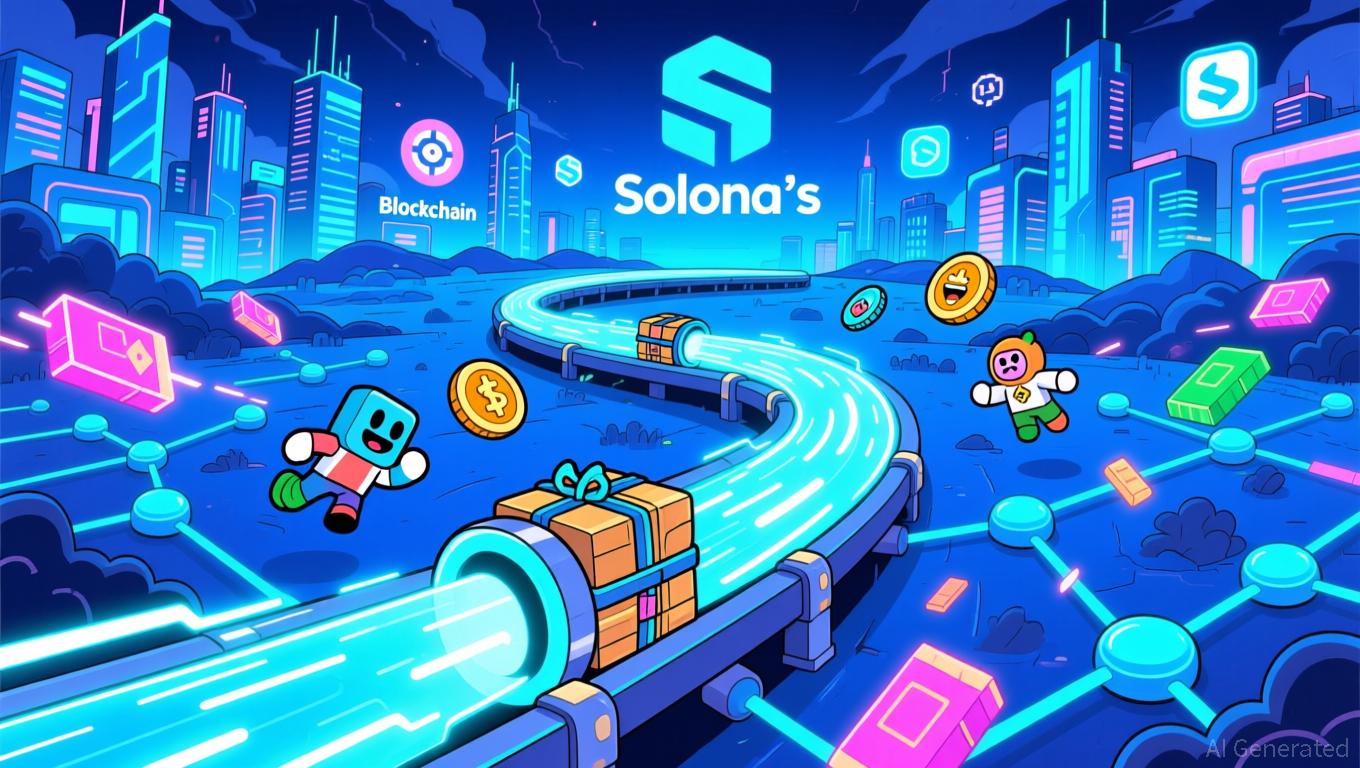Hong Kong's e-HKD: Building a Digital Gateway Connecting China with International Markets
- Hong Kong's HKMA plans to finalize e-HKD retail rules by mid-2026, requiring regulatory approval for all HKD-pegged stablecoins to combat financial risks. - The e-HKD pilot advanced tokenized infrastructure through 11 trials, but current demand remains focused on wholesale use cases like cross-border payments. - Regulatory efforts align with China's 15th Five-Year Plan, emphasizing Hong Kong's role as a "super connector" to integrate with GBA and Northern Metropolis projects. - A $1.7B Seres Group IPO an
Hong Kong is preparing to introduce stricter regulations for digital assets as the
The HKMA’s second phase report on the e-HKD pilot detailed that 11 projects—covering areas like tokenized asset settlement, programmable payments, and offline transactions—have further developed the city’s digital currency ecosystem. Despite these advancements, the HKMA observed that current interest in e-HKD is mainly in wholesale scenarios, such as cross-border payments and trade settlements. To encourage wider use, the authority intends to introduce unified tokenization standards and adjust the retail rollout schedule in response to international developments and market needs. The report also made clear that any stablecoin pegged to the Hong Kong dollar, regardless of where it is issued, must obtain regulatory approval, reflecting a proactive approach to address risks such as money laundering and financial instability.

This regulatory direction is consistent with Hong Kong’s overall plan to participate in national development strategies outlined in the 15th Five-Year Plan. Financial Secretary Paul Chan Mo-po highlighted in a blog post that Hong Kong will use its “super connector” advantage to strengthen ties with the Beijing-Tianjin-Hebei region and the Guangdong-Hong Kong-Macao Greater Bay Area (GBA). The Northern Metropolis, a major development initiative, is positioned as a hub for innovation and investment, with Chan emphasizing that Hong Kong’s distinctive status under “one country, two systems” will promote industrial and technological partnerships.
At the same time, Hong Kong’s financial industry is experiencing notable developments, including
The HKMA’s licensing strategy for stablecoins aims to strike a balance between encouraging innovation and ensuring financial stability. While the e-HKD’s retail introduction is still pending, the authority’s emphasis on wholesale and cross-border applications is in line with Beijing’s efforts to modernize digital infrastructure. As Hong Kong moves into the 15th Five-Year Plan period, its clear regulatory stance on digital assets may attract international fintech firms looking for a regulated environment to trial new technologies.
Disclaimer: The content of this article solely reflects the author's opinion and does not represent the platform in any capacity. This article is not intended to serve as a reference for making investment decisions.
You may also like
DeFi Faces Stability Challenge: USDX Redemption Issues Reveal Underlying Systemic Risks
- Whale investor 0xe454 spent $800,000 to buy 933,241 USDX tokens during its 2025 depeg to $0.3887, betting on recovery. - Redemption delays for both recent and prior 1.4M USDX purchases raised concerns over protocol stability and liquidity risks. - Lista DAO's emergency vote (LIP 022) aims to liquidate USDX positions amid 800% borrowing rates, mirroring 2025 xUSD collapse risks. - Experts warn cross-collateralized DeFi structures amplify systemic risks, urging stronger collateral diversification to preven

Fed’s QE Strategy: Could AI Mania Lead to a Repeat of the 1999 Bubble?
- Billionaire Ray Dalio warns Fed's shift to QE risks inflating an AI-driven bubble akin to 1999's dot-com crash. - He criticizes reinvesting MBS proceeds into Treasury bills as monetizing debt while cutting rates amid large fiscal deficits. - Analysts highlight risks of reduced T-bill supply, lower yields, and repo market strains from Fed's $15B/month Treasury demand. - AI sector valuations and corporate earnings will test Dalio's concerns as November inflation data and PMI reports approach.

Solana Latest Updates: Sonami Advances Layer 2 Despite Solana’s Unstable Market Forecast
- Sonami ($SNMI) launched a Solana Layer 2 token to reduce congestion and boost efficiency, raising $2M in presale. - The $0.0019 token allocates 83B tokens for marketing, treasury, and development, targeting high-frequency DApps. - Solana's price fluctuated between $170-$190 amid upgrades and macroeconomic factors, with bearish derivatives signals noted. - Sonami's Layer 2 initiative aligns with Solana's scalability goals, supporting 2,500 developers and enterprise applications. - Presale success reserves

Solana News Update: Sonami's Layer 2 Seeks to Restore Solana's User Base Amid Intensifying Competition
- Sonami ($SNMI) announced a continued token presale and launched Solana’s first Layer 2 token to address scalability issues. - The project aims to reduce congestion by bundling transactions, raising $2M at $0.0019 amid Solana’s 30% Q3 user decline. - 40% of 82.999B tokens allocated for development/listings; team includes Solana veterans and fintech experts. - Presale success reflects investor confidence in Solana’s growth amid Layer 2 competition from Ethereum-based rivals.
